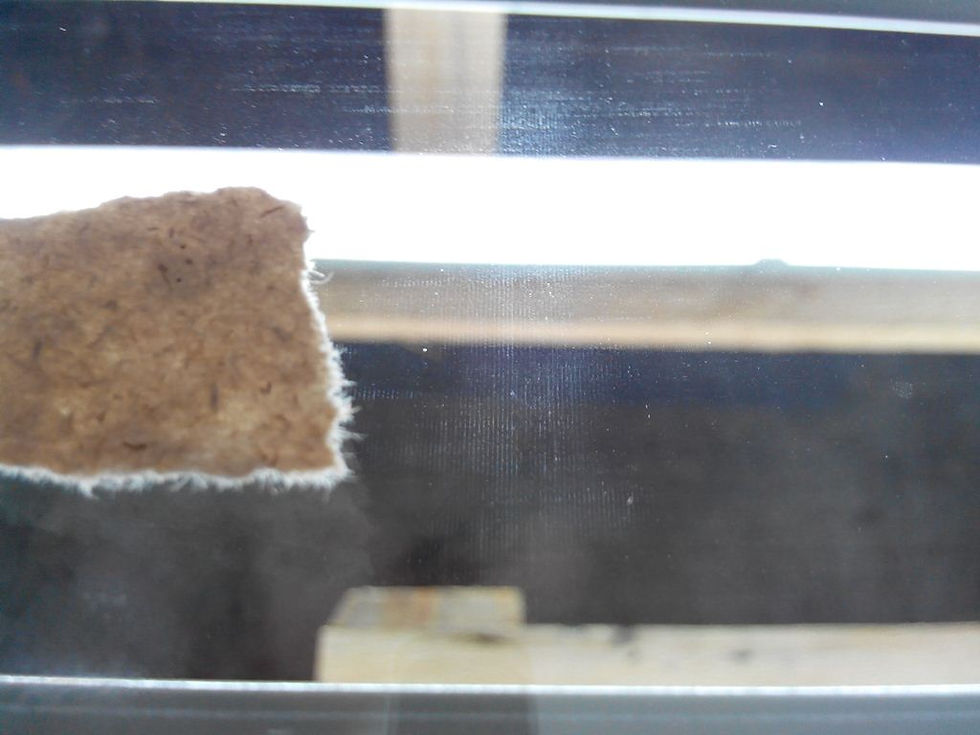Tempered glass customers usually have certain tolerances for defects, like tempered distortion and white haze. Recently, I've heard this phenomenon referred to as “ghosting.” It's an apt description because if you don’t know how to prevent it, it feels like a ghost is causing it in the furnace.
Have You Experienced a Ghost in Your Tempered Glass?
White haze, often called ghosting, is a defect that can appear as dust, roller residues, or mechanical deformations caused by excessive pressure between the glass and the rollers. This defect can manifest in several forms, the most common being a vertical strip in the center of the glass. White haze can also appear near the edges, corners, or spread across the glass in vague hazy areas or repetitive stripes.
In this article, we’ll explore a checklist to help you systematically solve the white haze problem.

Understanding White Haze
White haze on tempered glass can appear in various forms, each requiring a different solution. A systematic approach is crucial for effectively addressing this issue.
Step 1: Define and Describe the Problem
Location: Identify where the haze is visible on the glass.
Pattern: Note if the white marks are consistently in the same position.
Repetition: Determine if the pattern is repetitive.
Details: Examine the scratches, lengths, notches, imprints, sizes, and colors of the defects. Use a magnifying glass if needed.
Glass Type: Identify which glass thicknesses or types exhibit the defect.
Step 2: Analyze Environmental Changes
Timeline: Determine when the issue started.
Environmental Changes: Note any changes in the surrounding environment.
Nearby Equipment: Check for nearby grinding stations that could cause dust to enter the furnace.

Step 3: Use Process Data and Analytics
Correlation: Check if there’s a correlation between the marks and the scanner picture.
Quality Monitoring: Review Quality Monitoring System data for any irregularities.
SO2 Usage: Note how much SO2 has been used and when.
Step 4: Analyze Possible Mechanical Sources
Ceramic Rollers:
Surface roughness?
Dust or solid particles?
Cracked or brittle surface?
Roller leveling?
Insulation:
Is insulation intact?
Are the furnace doors functioning properly?
Cleanliness:
Dust on the floor and bottom heaters?
Dust or particles in or on top of the air convection channels?
Functionality:
Heaters?
Thermocouples?
Convection (pneumatic air system or blowers)?
Drive System:
Consistent drive speed?
Proper roller bearing function?
Condition of drive belts?
Step 5: Implement Corrective Actions
Process Parameters: If the problem is with the process parameters, correlate process analytics with white haze marks. Adjust parameters to ensure the glass runs flatter in the furnace. Common white haze issues, especially in the center, are often due to incorrect parameters. Adjust by decreasing roller temperatures and/or increasing top convection (but be careful, too much top convection can cause other haze issues).
Mechanical Issues: If the problem is mechanical, use Step 4 to guide your corrective actions.
A systematic approach to problem-solving will help you eliminate the white haze effect. There are various forms of white haze, each requiring specific solutions. In future posts, we will cover how to address each type of white haze problem in detail.
Stay tuned for more insights on solving white haze issues in tempered glass.


Comments